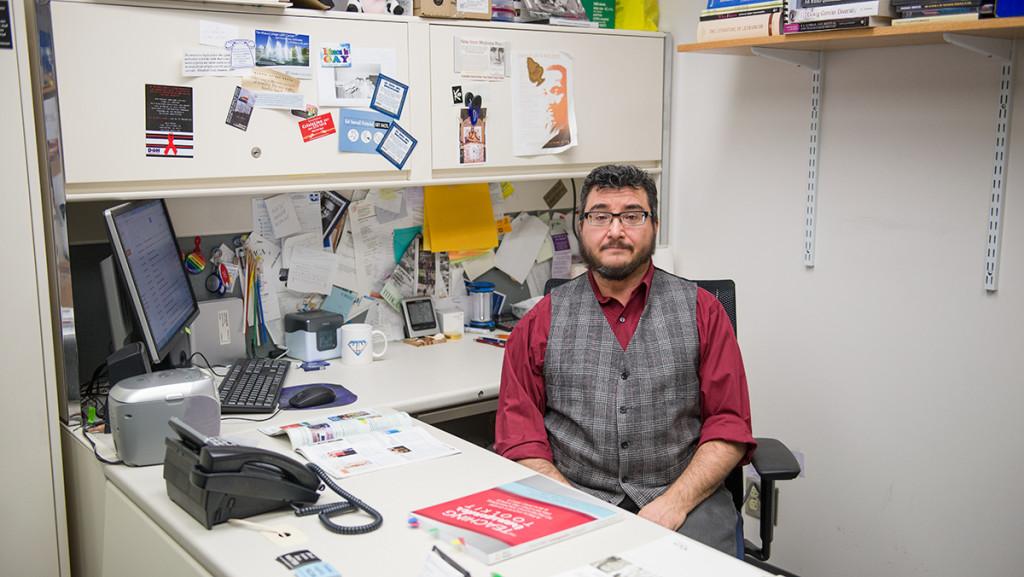Ithaca College’s Luca Maurer, program director for the Center for LGBT Education, Outreach and Services, and Eli Green, assistant professor of public health at William Paterson University, published their latest book, “The Teaching Transgender Toolkit,” three months ago.
Maurer said the book’s publishers, Planned Parenthood of the Southern Finger Lakes and Out for Health, want to issue a second printing of the book, which provides resources on how to facilitate training sessions and educate others about the transgender community.
Staff Writer Elena Piech spoke with Maurer to discuss his book, the writing process and transgender rights.
Elena Piech: When did you and your co-author start writing this?
Luca Maurer: We worked on this for about two years, so this has been a labor of love that we have been formulating and then organizing and writing for a couple of years.
EP: How would you describe your book?
LM: What this is, is a detailed collection of best practices, lesson plans and resources for people that want to lead transgender education sessions or facilitate opportunities for people to learn more about transgender people and themes.
EP: How long had you thought about writing a book like this?
LM: That’s the interesting thing. Between Eli and myself, we have over 35 years of experience doing this stuff, and when we realized that, that’s when we thought, “We should probably write something like this down.” One of the interesting, newer statistics that just came out is, although more than 90 percent of people say they know either a lesbian, gay or bisexual person in their life, only 16 percent of people in America are aware that there is a transgender person in their life. That is actually a lower percentage than the PEW Research Center found of Americans that believe they have seen a ghost.
EP: Why did you write this book?
LM: The purpose of this book is to increase empathy, increase education, so that more people can be more affirming of transgender people in their lives. The effect a lot of times is transgender people will feel more safe coming out. And that will counter that whole statistic. Transgender people are probably more common than ghosts. I don’t have a lot of research on ghosts, but I have a lot of research on transgender people. I know that it’s very difficult to get an estimate on how many transgender people there are in America. Again, transgender people face discrimination and stigma and fear, but even the lowest estimate the demographer has made is about 700,000 people in the United States. And 700,000 people doesn’t sound like a lot, but to give you a ballpark, 700,000 people is also about the size of the population of Delaware.
EP: When did you meet your co-author, Eli Green?
LM: We met a long time ago for people who do this kind of work, people in general who educate about sexuality — it wasn’t transgender specific. When information and training and education around transgender people and things came up, frequently my name and his name was attached to it, and we were like, “Hey, we need to meet each other.” So over the years, our friendship and collegial relationship grew. So about 2 1/2 years ago, Eli approached me and said, “I’m really interested in writing something, but I’m really interested in writing it with you because the two of us have a lot of experience and — oh boy — would I love to share that so other people could do this work.”
EP: How did the two of you research for this book?
LM: In a number of different ways. I’m very interested in researching data and finding the most current information out there. We also wanted to make something that was completely informative and researched based, but also easy to use. We didn’t want people to pick up the book and think, “Oh my gosh this is so much information. I’m going to put this book down.” We wanted it to be like, “Hey, look. Let’s make a layout that’s simple and interesting.”
EP: Do any of the book proceeds go to help transgender people?
LM: The other thing that we love about our publishing arrangement is that part of the proceeds of this book go back directly to services that serve transgender people, especially people that are most marginalized. Especially transgender people of color, transgender people in rural communities. We really love having a publisher who understands how important that is. This is something that we put together because we really center our whole careers on creating the world that we want to see. One where everybody is respected and affirmed, and part of that is making sure that there are enough human and monetary resources that can do this.








